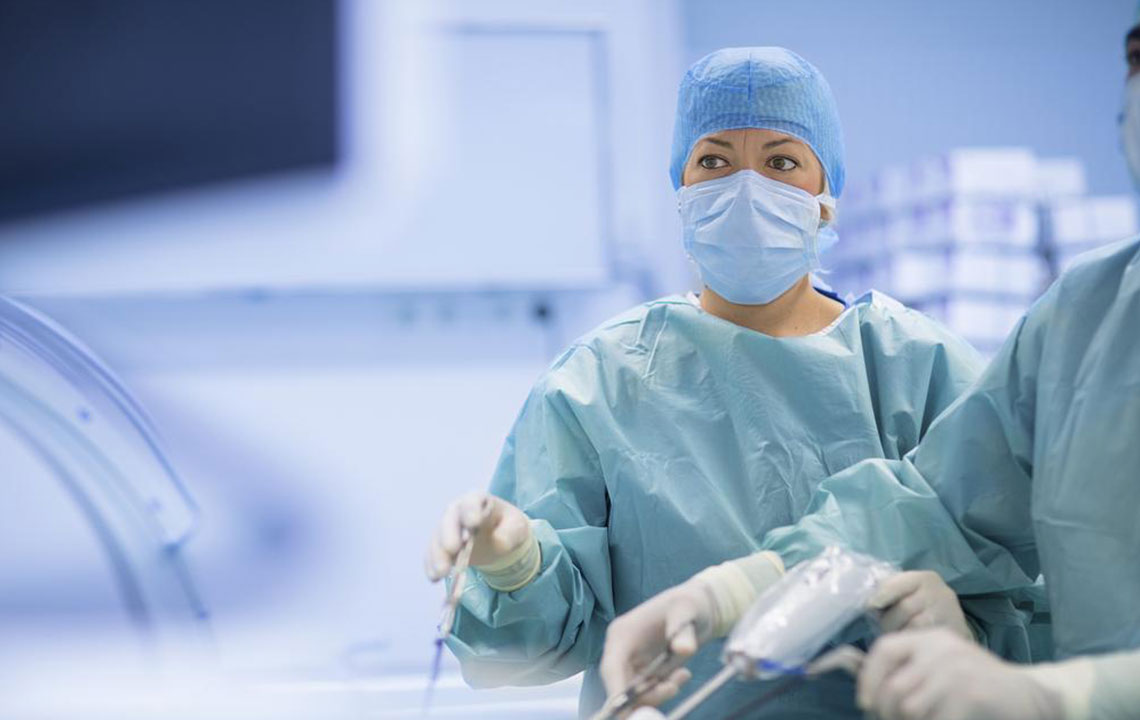Different Types of Rotator Cuff Repair Surgeries
Rotator cuff repair is the term given to the surgical process where a torn tendon in the shoulder is repaired through the operation. There are three different kinds of surgeries to treat rotator cuff tears. These are open repair, arthroscopic repair and mini-open repair. The last one combines both arthroscopic and open techniques.
Open Rotator Cuff Surgery
This surgical procedure involves a several centimeters long incision over the shoulder. The surgeon to get near to the torn tendon to repair it has to separate the shoulder muscle.
Open Rotator Cuff Repair is suggested for:
- Patients with complicated and large tears
- Patients who need tendon transfers and other reconstruction procedures
- Severe rotator cuff injuries are treated with the tendon transfer option.

The surgeon may even remove bone spurs during the operation. Osteophytes are a sign of osteoarthritis which causes shoulder pain. It also affects shoulder joint function.
Arthroscopic Rotator Cuff Repair
Patients those who have small to medium sized tears, which is about three centimeters or smaller are suggested arthroscopic rotator cuff repair. It is an outpatient surgery and is the least invasive of the different rotator cuff repair procedures.
Arthroscopic surgery is done by making small incisions, each not more than a centimeter long. This means less pain, shorter recovery period and a reduced risk of complications for the patient.
This procedure requires the doctor to insert surgical instruments and a small camera through small incisions.
Mini-Open Rotator Cuff Repair
This procedure uses both open surgery and arthroscopic techniques. Arthroscopy is used to assess the injury, for bone spurs trimming and lose cartilage removal. Moving forward, a 1 to 5-inch incision is done to give direct visual access to the surgeon to repair the tear.
This procedure is arguably less invasive than its open repair counterpart. The open repair operation would need the shoulder muscle to be detached, but the same is not applicable in case of mini-open and arthroscopic repairs.
The Best Option of All
All three types of surgeries give similar results as far as strength improvement, pain relief, and rotator cuff functioning is concerned. The factors concerning the choice of surgery vary. These are:
- Patient’s anatomy
- Size of tear
- Surgeon’s experience and knowledge of the treatment options.
- The condition of the tissues, bones, and tendons of the patient.
There are three steps for all these surgical procedures:
- Removing debris and fragments in the rotator cuff area
- Making space for the tendons of the rotator cuff as this would help to prevent inflammation and strain.
- Stitching up torn edges of the top tendon of the shoulder together and also aligning it to the top of the humerus bone present in the arm.
- The surgery is done to ensure reduced shoulder pain primarily and also to restore shoulder function. Most surgeries of rotator cuff repair are performed at the outpatient department of the hospital. It means that the patient does not have to stay in the surgical center or the hospital overnight.
There is a lot to consider before going for rotator cuff surgery. Below are some home preparation recommendations and certain medical guidelines that you may be asked to follow before the surgery.
General Medical Guidelines
- The patient may be asked to stop certain supplements or medications, especially the ones that make it difficult to clot blood, two weeks before the surgery.
- People suffering from diabetes or heart disease may be asked to visit their physicians to understand their present health condition in this regard and how to bring it under control if there is any problem that may interfere with the surgery.
- The surgeon may ask the patient to see a physical therapist to discuss rehabilitation.
- It is important to take rest as much as possible the night before the surgery.
- Ask somebody to help with daily activities from the day of the surgery to a few more days as arm movement will be a bit restricted after the surgery.
- The surgeon would advice depending on the patient. Since every patient is different from the rest; the suggestion would be patient specific as well. Before any surgery, it is important for the patient to maintain sound mental and physical health.
If there is an issue like heart infection, lung infection, tooth problems, etc., they must be treated beforehand. Any shoulder and arm related skin conditions have to be taken care of before the surgery. Taking proper precaution helps in the entire process, from surgery to the recovery of the patient.

